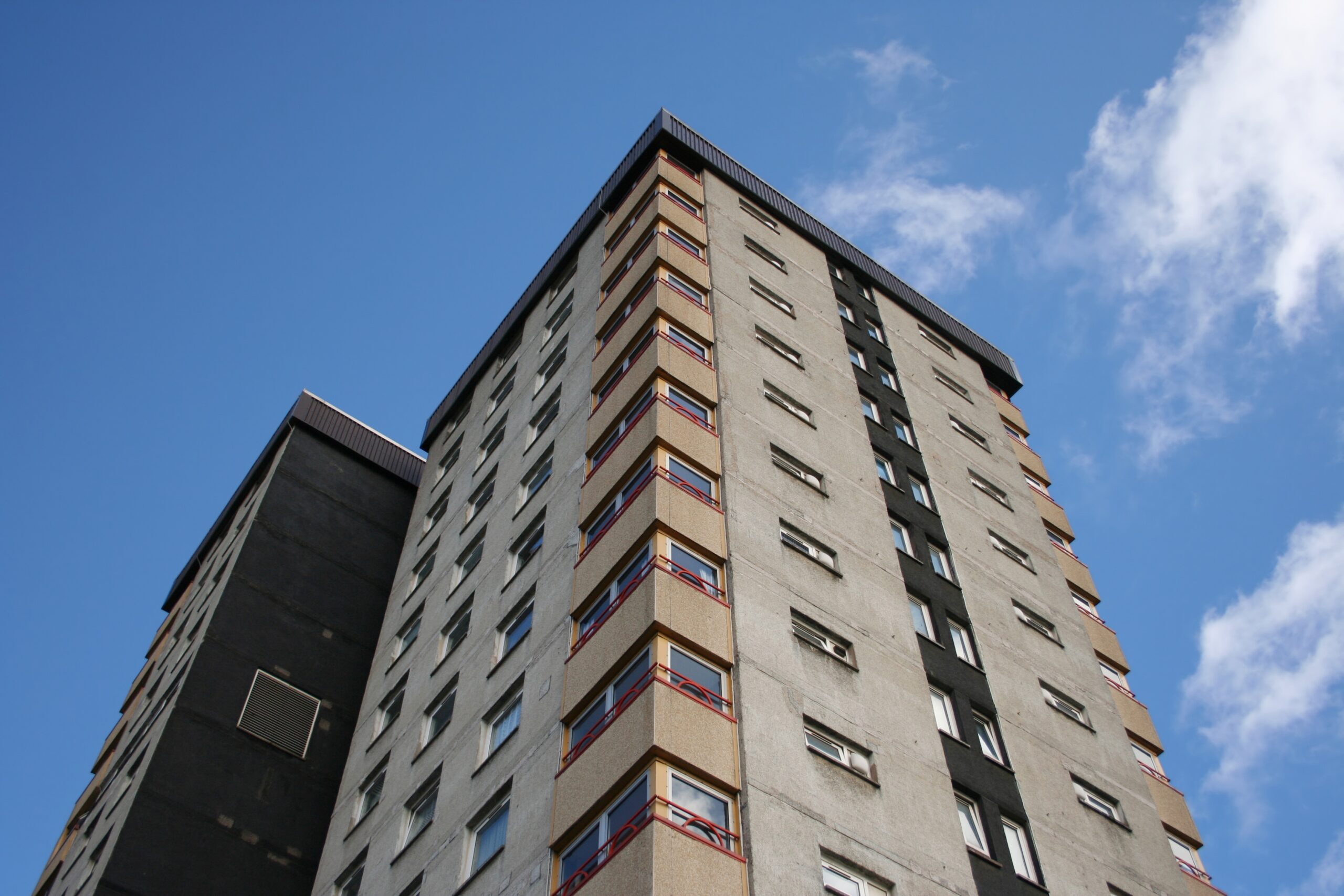By David Gear, director, head of major and complex loss (Scotland and Northern Ireland)
Nearly five years after the Grenfell Tower fire in London, hundreds of thousands of homeowners and leaseholders are still living in potentially dangerous buildings.
Billions have been invested in building safety, including government assistance and privately funded schemes to replace unsafe cladding that increases the risk of fire spread. These initiatives have principally been aimed at buildings over 18m high with ‘non-ACM cladding’, an unsafe cladding system that is not aluminum composite material.
Of course, to access funds from government assistance programs there is an eligibility criterion. Not to mention, the various private funds are hopelessly oversubscribed. Whilst waiting on funding approval and works to begin, affected owners can find themselves in desperate situations where they face significant private repair bills, huge rises in building insurance premiums, enforced interim fire safety measures (including the cost of 24-hour fire watch patrols or monitored fire alarms) and worst of all, unmortgage-able flats.
Moving forward
For buildings under 18m high, the situation is fluid and ever-changing. Though requirements are now less onerous, some mortgage lenders are still insisting on sight of External Wall System (EWS) Certification despite the government stating this is no longer always necessary. However, there are still circumstances where buildings less than 18m require an EWS form. As recently as January 2022, the Housing Secretary Michael Gove set out measures aimed at forcing developers to pay for cladding removal from lower-height buildings. The pledge made was that no leaseholder in a building above 11m would ever face any costs for fixing dangerous cladding. Whilst on paper a well-intended initiative, progress will inevitably be slow and there are no guarantees in terms of funding and timescales.
Types of insurance for property owners
Historically within the insurance marketplace, there have been numerous providers of latent defect/building guarantee style insurance policies. These typically provide cover for new properties with inherent defects that could not be identified before completion. For a claim to succeed, the owner would generally need to demonstrate — within a specified period — non-compliance with building regulations that applied at the time of the build or an issue which causes a present or imminent danger.
The volume and nature of claims involving cladding significantly increased post-Grenfell. Qualifying claim criteria was challenging with disputes around how/if a policy would respond to cladding that was initially certified as compliant with regulations at the time of construction, then post-Grenfell, was deemed to fail fire safety rules. There were numerous, continuously high value and high profile legal actions against insurers in this sector, a number of which have gone against them. This has culminated in some insurers leaving the market, selling off their book of business and entering administration.
Factors to consider
What happens if a traditionally insured property event occurs at a block of flats which has non-ACM cladding and the owners are already aware of this and are required to undertake a cladding removal and renewal scheme? Let’s use an extreme storm incident as an example. A current day hurricane incident blows off huge sections of cladding from various blocks all insured under a property owners building policy for the entire development. Numerous flats are rendered uninhabitable in the short and long term. The property insurer and loss adjuster are immediately made aware of the cladding type and the pre-incident repairs required. How will the property policy respond to the cladding element of the claim, debris removal, temporary repair and ultimate renewals together with any required alternative accommodation and potential prolongation of this?
Addressing difficult and complex claim situations
Pre-incident, we know the flats were habitable and the cladding provided a purpose though given its type, it needed to be renewed. For this set of circumstances, coverage under the property policy is clear if contentious. It would not meet the cost of the cladding renewal and any increased alternative accommodation costs directly linked to the cladding renewal period and all associated approvals. The principle of indemnity is the key factor here together with supplementing policy wording pertaining to insured loss or damage and restrictions in cover as per policy conditions such as “buildings awaiting refurbishment, redevelopment or renovation”. Difficult and complex claim situations are inevitable.
To expand on this scenario, let’s say we have the same incident and damage at a development where the cladding was compliant and not the subject of any pre-incident renewal requirement. Whilst the policy will react, sourcing the required building specialists who are equipped with the required professional indemnity insurance to specify the required type of cladding is proving challenging and expensive. Delays are also inevitable. The replacement cladding must be compliant with ever-changing requirements (over 18M high is a recent example). For our scenario there is only a partial repair to consider, however the risk to be mindful of is enforced renewal of undamaged cladding on the same ‘building’. Firstly, what is the subject ‘building’ and how would the policy react? Policies of this type will typically include standard extensions of cover. As always, the policy wording should be fully reviewed and considered.
What is certain is that insurance claims involving cladding will inevitably be complex, potentially contentious, high value and protracted.

